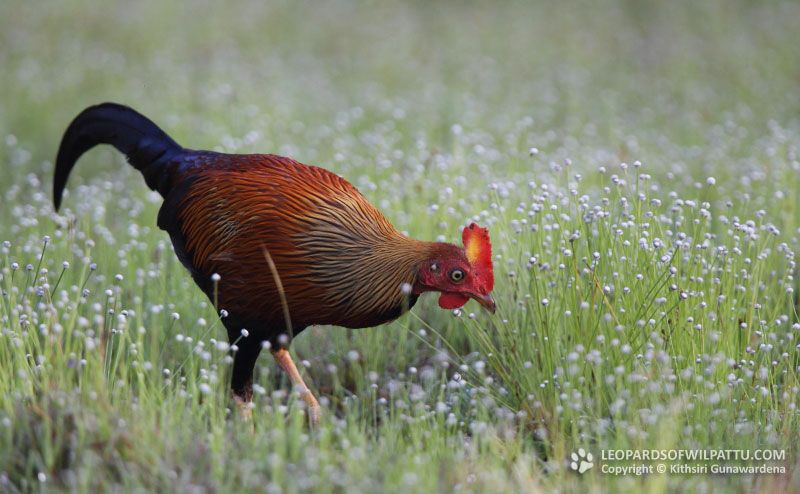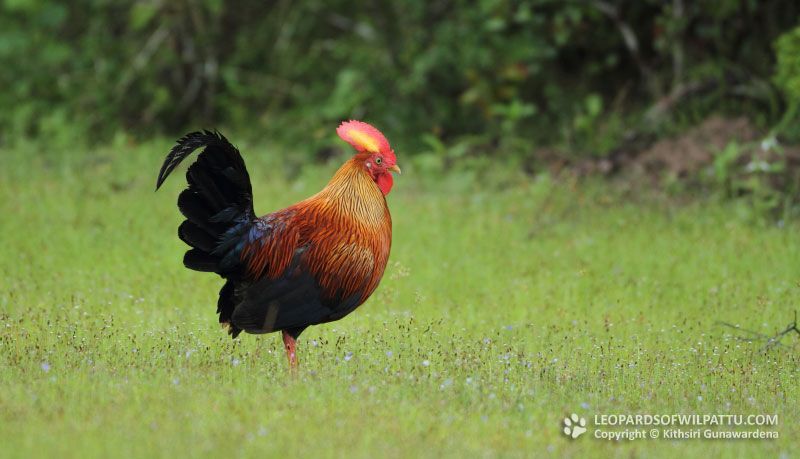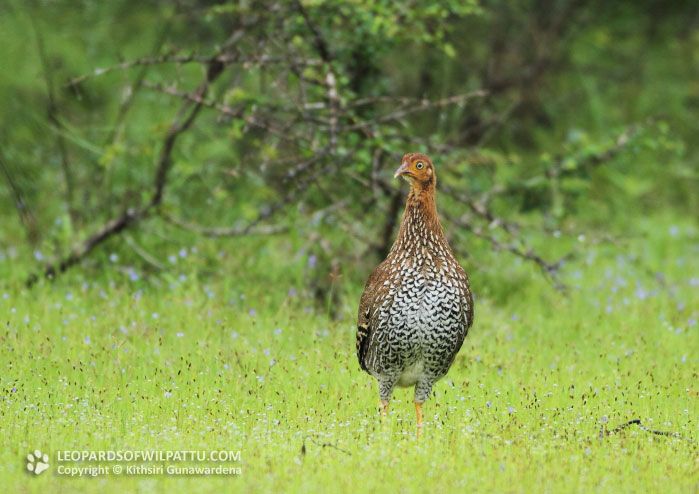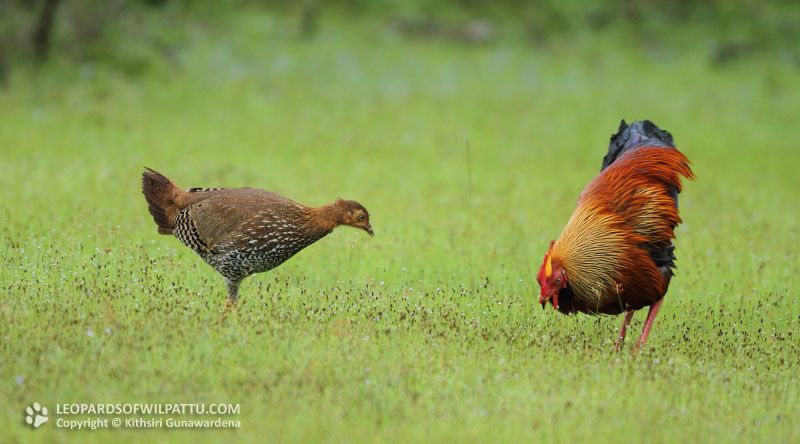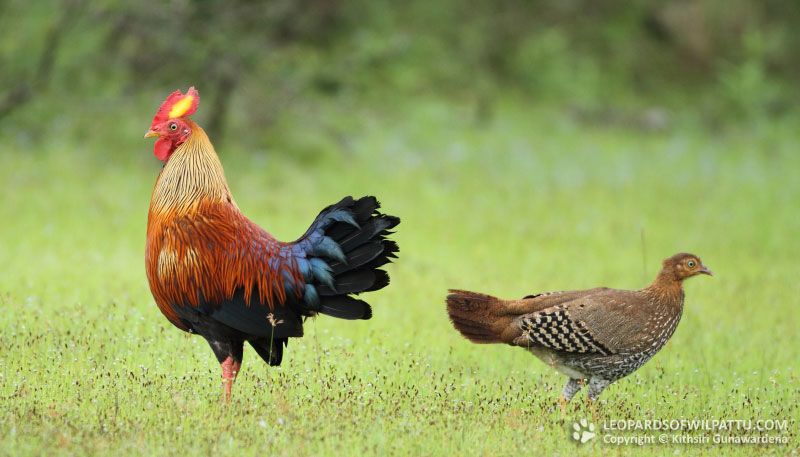
Birds ‹‹ Go Back
This is an endemic species and is also the national bird of the country. It is a common species and I have seen it throughout the island from the highest hills to the coast wherever there is sufficient forest or scrub jungle. It is also found in most of the tea estates even far from any forests. In the North I have observed this species in Ponnaveli at Devil’s Point but not in the Jaffna peninsula. The male’s characteristic call often announces its presence in most forested areas well before it is seen. These birds often visit most human habitations situated bordering forests, to feed on what is disposed of from the kitchens. If they are not harassed they become quite tame and will permit to be approached up to even a few feet. A few birds at the Sinharaja Forest Reserve have become so tame and bold that they even approach humans with the expectation of food. The conservation status of this species is regarded as Least Concerned (National Red List 2012).
This is a species protected under the Fauna and Flora Protection Ordinance as amended by Act No. 22 of 2009.
As in all the national parks across the country, this bird is quite common in Wilpattu and pairs can be often seen feeding on the roads. A short spell of rain will bring most of them on to the roads invariably to avoid getting wet from the rainwater dripping from the trees. I once counted 16 birds between Borupan Wila junction and Kumbuk Wila immediately after the rain ceased. The alarm call of this bird generally made during the day upon being disturbed, indicated the presence of some predator. I have, on a number of occasions, managed to locate leopards inside the forest with this alarm call.
On two occasions, in May 2010 and July 2012 in Wilpattu, I have come across gatherings of 15-20 subadult male birds of this species. These groups consist exclusively of subadult males. I have not observed this behavior so far in other parks.
Seeing the colourful adult male accompanied by one or two females in the early morning light feeding on a field of freshly bloomed Kok Mota is one of the best sights Wilpattu can offer.

